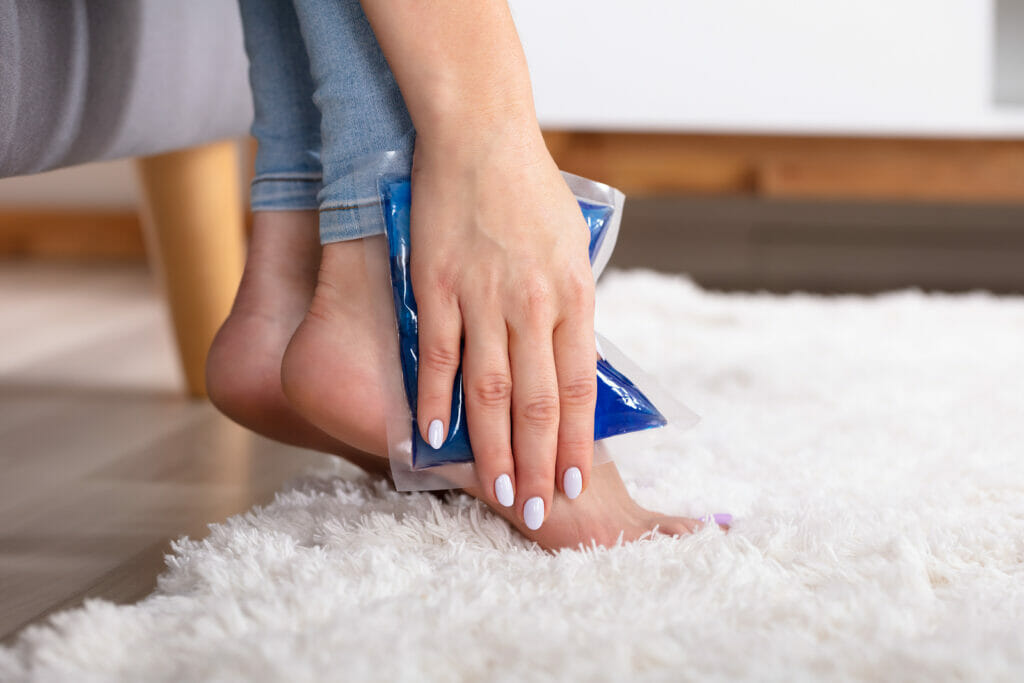How do Ice Packs Reduce Swelling?
Table of Contents
ToggleSwelling is one of the first signs that you’ve suffered an injury. It can be very uncomfortable and painful, making it difficult to move your body. Swelling occurs when injured tissue fills with fluid from surrounding blood vessels. The goal of using ice packs on an injury is to limit this swelling so that your body can start the healing process more quickly and effectively.
Causes of Swelling
Swelling is a normal part of the healing process, and it is caused by fluid leaking from blood vessels and collecting in the injured tissue. This extra fluid in your body can be uncomfortable, but it’s also there because it is your body’s natural response to injury. The swelling will go down on its own as soon as the extra fluid has been absorbed by tissues or eliminated through sweat or urination.
When you sprain an ankle or break a bone, you’ll likely experience some swelling—and that’s a good thing! It means that your body is responding well to what happened, repairing itself so you can get back on track as soon as possible.
Whether you’re suffering from a sprained ankle, muscle pain, or swelling, Hampton Adams Reusable Ice Pack can help to reduce your discomfort and speed up the healing process. They are designed with an ergonomic shape that fits comfortably in your hand, allowing for easy application. The gel of the ice pack is contained in air-tight bags, preventing leakage.
How do I use an ice pack?
Because of how ice packs work, it is essential to know how to use them safely. For example, if you place an ice pack on your skin for too long, the cold will penetrate deeper and cause tissue damage. This is called frostbite and can result in permanent injury.
To avoid frostbite:
- Don’t apply an ice pack directly to your skin; wrap it in a cloth first (such as a towel).
- Don’t keep the ice pack on your skin for over 30 minutes at a time. Keeping ice packs on for longer than 30 minutes can reduce blood flow so much that it causes nerve or tissue damage, leading to permanent injury. If you’re using more than one type of cold treatment—such as alternating between heat and cooling—make sure not to expose yourself to either method for longer than 30 minutes at a time.
Hampton Adams ice packs reduce swelling and inflammation, so they’re perfect for injuries you’ve sustained while working out. They’re also great for relieving pain in your joints and muscles so that you can get back to your regular daily activities without pain.
Our ice packs are made with a gel that stays flexible at low temperatures, which makes them easy to apply without causing any discomfort or frostbite. They’re also reusable, so you don’t have to worry about throwing away a bunch of plastic after each use.
Inflammation is necessary for healing, but the swelling may cause more pain or stiffness than you want
Swelling is a normal part of the healing process, but it can cause pain and stiffness. The more swollen your body is, the longer it will take to heal.
The following factors may cause the swelling:
- Inflammation (swelling) in response to an injury or infection.
- Blood clotting in an injured area. This blood clot can block blood flow to tissues around it and lead to tissue death (gangrene).
We know that you want to get back on your feet, but it’s not always easy when it comes to injuries like sprains, bruises, and swelling. We understand how frustrating it can be when you’re trying to recover from an injury. That’s why Hampton Adams has created a line of Ice Bag for Injuries that are designed specifically for treating injuries so you can get back on track faster.
Our ice packs stay cold for hours and conform to the shape of your body so that they won’t slip off while you’re using them. And since they’re portable and reusable, they’ll be there whenever you need them most—at home or out on the road.
Ice packs can reduce swelling and inflammation by causing your blood vessels to constrict (become smaller)
When you’re injured, and your body’s natural healing process kicks in, white blood cells rush to the site of injury. However, they need more space in your bloodstream to reach the site quickly and begin repairing it. This causes your blood vessels to dilate (become wider) and allows more fluid to flow into your injured area. This is why swelling occurs after an injury—your body needs more room for all those white blood cells and fluids that help start healing your damaged tissue. Unfortunately, this can make things look worse than they are—and even lead to increased pain or stiffness over time if left untreated.
Ice packs reduce swelling by constricting blood vessels and decreasing circulation to the area. Ice reduces the temperature of surrounding tissue and slows down how quickly your body metabolizes (breaks down) proteins, causing fluid to leak out of your bloodstream. When you use an Ice Pack for Injury, you’re constricting your blood vessels and cutting off circulation in that area. This means fewer inflammatory molecules can leak from the injured vessel into surrounding tissue, further reducing inflammation in the area.
Hampton Adams ice packs are designed to help you get back on your feet quicker. They fit perfectly over your swollen area and provide soothing relief from the pain of swelling. They are also reusable, so once they’ve been used a few times, they’ll be just as effective as they were when they were brand new.
So, if you’re wondering how ice packs reduce swelling, hopefully, this article was helpful! Ice packs are a great way to treat swelling and pain after an injury. Hampton Adams ice packs are the perfect start to your recovery journey.
